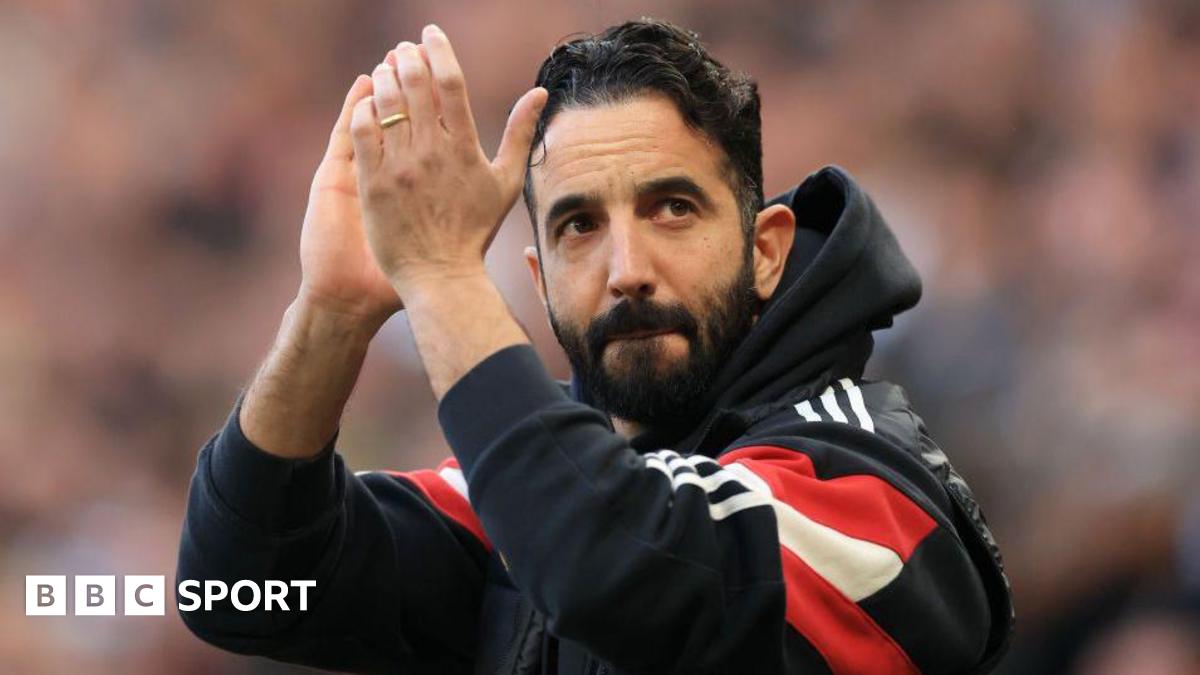The arch manipulator is up to his old tricks. According to actor Edward Norton, Bob Dylan has “slipped a totally inaccurate scene” into his upcoming biopic A Complete Unknown (released on January 17). Norton, who plays folk singer and activist Pete Seeger in the film, told Rolling Stone that 83-year-old Dylan takes “obvious pleasure in obfuscation and distortion”, adding that he’s “such a troublemaker”.
To “troublemaker” you can add myth-maker, enigma, unreliable narrator, fabulist, clever distorter and prankster. Even his name is a riddle – Dylan was born Robert Zimmerman before he legally changed it in 1962. Throughout the six-decade career that followed, Dylan has misdirected and bewildered fans at almost every turn. “Nobody knows about me,” he told critic Robert Shelton in 1966.
This mystique has always been deliberate, in part due to Dylan’s reluctance to be lionised as the voice of his generation (a US headline once ran “Spokesman denies that he’s a spokesman”, much to Dylan’s exasperation). Friend Marianne Faithfull wrote that Dylan “was so cryptic that everything seemed to take on at least one other meaning… He was nothing if not a slippery subject.” Dylan has gone as far as to suggest that deception is a creative necessity. “When somebody’s wearing a mask, he’s gonna tell the truth. When he’s not wearing a mask, it’s highly unlikely,” he told Martin Scorsese’s film about 1975’s Rolling Thunder Revue tour.
But there have been times when his rabble-rousing has tipped into pretension, sometimes insufferably so. As A Complete Unknown starring Timothée Chalamet approaches its UK release next Friday, here is a list of the musical genius’s most confounding, and annoying, acts of mischief.
1. A hokum origin story
When Dylan first signed to Columbia Records in 1961 he sat down with the label’s straightlaced head of press Billy James, who was keen to gather some facts about the artist. “He looked like he’d never been stoned a day in his life, never been in any kind of trouble,” recalled Dylan, who immediately became mischievous. The musician told James that he was from Illinois, that he’d worked in construction in Detroit, that he’d had a job driving a bakery truck and that he’d ridden a freight train to get to New York. “Pure hokum,” was how Minnesota-born Dylan later described the information he’d given the poor, unsuspecting James.
2. Playing dominoes with The Beatles
Dylan famously introduced The Beatles to marijuana when the Fab Four toured the States in the summer of 1964. The pot left all four bandmates, plus manager Brian Epstein, high as kites. When British journalist Chris Hutchins entered the group’s New York hotel suite that night, he found the British men sitting on five chairs in a line. “Every now and again, a man standing at one end of the line would push the closest Beatle off his chair and, in domino effect, each would knock the next one off, ending with Brian, who would collapse on the floor laughing helplessly, setting the others off,” recalled Hutchins in Craig Brown’s book One Two Three Four. “It was a surreal scene, made more bizarre by the fact that the man doing the pushing was Bob Dylan.”

3. Middle finger to the fans
Every artist with a long career will release mediocre albums. It’s inevitable. But to deliberately release a terrible album to purposefully put people off you is an insult to fans. This is what Dylan did with Self Portrait in 1970. The 24-track double album was a hotch-potch of cover versions, live tracks, instrumentals and originals. Rolling Stone critic Greil Marcus famously opened his review with the words, “What is this sh-t?”. A 1991 book called The Worst Rock and Roll Records of All Time named it the third worst rock album ever. In a 1984 interview, Dylan labelled the album a “joke” that was loaded with “crap” and admitted he recorded it to try to make fans forget about him. “I wanna do something they can’t possibly like, they can’t relate to,” he said of his rationale. But the idea “backfired”, he said, as it simply made fans “more resentful”. You don’t say.
4. Monsieur Finian
Getting straight answers out of rock stars as a journalist can be hard enough at the best of times. But Dylan took things to whole new levels in May 1966 at a press conference in Paris’s George V hotel. The singer had earlier bought a wooden ventriloquist’s dummy from a flea market. He decided to call it Finian. Every time a journalist asked Dylan a question, he’d lean his ear towards Finian’s mouth and “listen” to the answer from the puppet before repeating it to the assembled hacks. Some of the questions and responses included:
Reporter: What did you think of your first night in Paris?
Dylan: It was very dull.
Reporter: Why is the puppet here?
Dylan: It followed me.
Reporter: Is it a mascot?
Dylan: No, it’s a religious symbol.
Reporter: What religion?
Dylan: It’s a symbol of the religion of tears
“It drove them nuts,” said photographer Barry Feinstein, who documented the tour. Playful or annoying? While the event was no doubt the former for Dylan, it was clearly the latter for the reporters. It would be Dylan’s last press conference for 12 years.


5. Romancing the Stone?
In Scorsese’s aforementioned Rolling Thunder Revue documentary, released in 2019, the actress Sharon Stone claims she got to know Dylan in the mid-1970s. She says he played her Just Like A Woman backstage one night and told her that he’d written the song about her. It fell to Dylan guitarist T Bone Burnett to tell Stone that the track was actually written 10 years previously. The problem is, this entire scenario is probably nonsense. There’s no evidence to suggest it ever happened. In the same documentary, a director called Stefan van Dorp reminisces (in the present day) about filming the Rolling Thunder shows back in 1975-76. Van Dorp is actually performance artist Martin von Haselberg, also known as Bette Midler’s husband. Which is clever, because Midler briefly appears in the film with Dylan in grainy footage from the 1960s taken in Manhattan club Gerde’s Folk City. Or does she? (She does.)


6. Master of misdirection
For almost all his career Dylan has been fed up with being labelled a generation-defining sage, with all the inevitable attention that this brings. “I wasn’t the toastmaster of any generation, and that notion needed to be pulled up by its roots,” he has said. So in the mid-to-late 1960s he launched a campaign of misdirection to try to dial down people’s interest in him. He started a rumour with his record company that he was planning to quit music to enrol in the Rhode Island School of Design. The news leaked out to the press. “‘He won’t last a month,’ some people said. Journalists began asking in print, ‘Whatever happened to the old him?’ They could go to hell,” Dylan wrote in Chronicles. He also went to Jerusalem where he intentionally got himself photographed at the Western Wall wearing a skullcap. “All the rags [magazines] changed me overnight into a Zionist. This helped a little,” he wrote.
7. The Other Names
“Dylan” isn’t the only name adopted by the one-time Robert Zimmerman. Freshly out of school, he performed as Elston Gunn. He also played as Tedham Porterhouse, Blind Boy Grunt and Robert Milkwood Thomas. When a member of supergroup the Travelling Wilburys in the late-1980s, he became Boo Wilbury. Then, in 2003, Dylan co-wrote the screenplay for Larry Charles’s film Masked and Anonymous. His name for this project? Sergei Petrov. A clue to Dylan’s love of different names can be found in one of his favourite lines of poetry (and the name of his 2020 song): “I contain multitudes”, from Walt Whitman’s epic 1855 poem Song of Myself. It’s worth remembering the lines that Whitman wrote before this: “Do I contradict myself? Very well then I contradict myself, (I am large, I contain multitudes.)” Explains a lot.
8. A serendipitous accident
On July 29 1966, Dylan became separated from his Triumph T100 motorcycle while riding in upstate New York. Rumours flew that he’d been terribly disfigured or had suffered life-changing injuries. But the seriousness of the accident was never ascertained. No hospital records have been uncovered relating to the incident and no ambulance was thought to have been called. Post-accident, Dylan stepped back; he wouldn’t tour again for almost eight years. In just two sentences in his 2004 autobiography Chronicles Volume One, Dylan admitted that the accident provided – at least in part – a shield behind which he could withdraw. “I had been in a motorcycle accident and I’d been hurt, but I recovered. Truth was that I wanted to get out of the rat race,” Dylan wrote.


9. The silent treatment
Numerous journalists have been at the receiving end of Dylan’s mysterious silences. When David Hepworth, the broadcaster, author and co-founder of Q magazine, scored an interview with Dylan for the first issue in 1986, things didn’t go quite to plan. “It was my worst nightmare. He wouldn’t talk to me. And when Bob Dylan doesn’t talk to you, ohhhh.. it’s something to tell the grandchildren,” Hepworth explains in Paul Gorman’s history of the music press In Their Own Write. “I sat in Dylan’s dressing room at Madison Square Garden while he played the guitar and studiously ignored me. And there was only me and him in the room.” Being a master of the oblique didn’t do Dylan any favours. The angle of the article when it ran was “F___, how rude is this?”, Hepworth said. It was a forerunner to a regular Q feature about bolshy artists entitled called “Who The Hell Do They Think They Are?”.
10. Donovan and the masked singer
Poor old Donovan, the mononymous hippy musician who had been tagged as “the English Dylan”, was at the receiving end of one of Dylan’s pranks in London in 1965. Donovan and friends visited the singer in his hotel room. But Dylan told his entourage to don masks just before Donovan arrived to “freak him out, man”, according to an account in Marianne Faithfull’s autobiography.


But things got worse. Once Donovan arrived, Dylan asked him to play a song on his guitar, wrote Faithfull. The song Donovan picked was Dylan’s own Mr Tambourine Man with the words changed – a song he’d picked up by osmosis on the festival circuit and was apparently unaware that Dylan had written. According to Faithfull, Dylan interrupted Donovan’s playing with the words: “You don’t have to sing any more of that one. I know it.” Ouch.
A Complete Unknown opens on January 17












